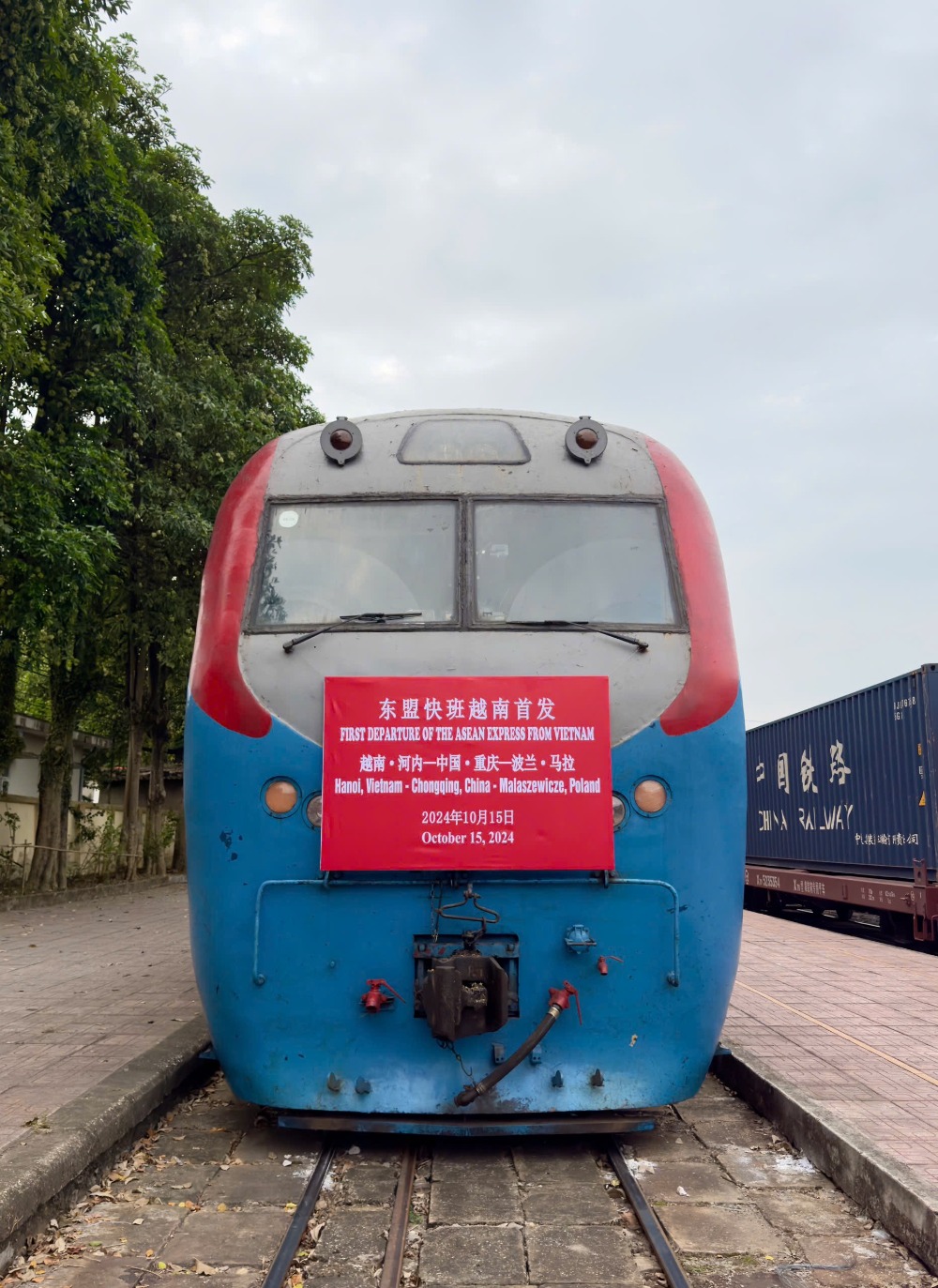 Bridging News
Bridging News
Chongqing Launches ASEAN Express to Boost Asia-Europe Trade
Chongqing - On the evening of October 20, a train loaded with automotive electronic parts departed from Chongqing's Tuanjiecun Station, heading towards Malaszewicze, Poland. This train marked the debut of the ASEAN Express.

The first departure of the ASEAN Express from Hanoi, Vietnam, via Chongqing, China, to Malaszewicze, Poland, on October 15, 2024. (Photo/Yuxinou Company)
Jointly operated by Yuxinou (Chongqing) Supply Chain Management Co., Ltd. and the New Land-Sea Corridor Operation Co., Ltd., the ASEAN Express connects the China-Europe Railway Express (Yuxinou) with the New International Land-Sea Trade Corridor (ILSTC), aiming to shorten the freight transit time. While these two logistics channels have cooperated before, this joint operation marks the first time they have deeply integrated their services.
The birth of the ASEAN Express
Although the China-Europe Railway Express and the ILSTC have previously collaborated, their interactions were largely limited. For example, from January to June this year, the two corridors jointly handled 1,800 TEUs. However, due to the different operational platforms and responsibilities, their cooperation often stopped at transferring goods at Chongqing before continuing on their respective paths.
Previously, ASEAN products destined for Europe by rail had to be shipped to Chongqing through the ILSTC, re-sorted, and then forwarded via the Yuxinou company. This process involved duplicating certain procedures. In recent years, with challenges to global supply chains and rising trade between Europe and ASEAN, a faster, more cost-effective logistics solution was needed.
Two companies saw an opportunity to meet this demand by integrating their logistics resources to create the ASEAN Express. This would allow goods to move seamlessly from ASEAN to Europe with minimal paperwork and faster delivery times.

The first departure of the ASEAN Express from Hanoi, Vietnam, via Chongqing, China, to Malaszewicze, Poland, on October 15, 2024. (Photo/Yuxinou Company)
In July, the two companies began preparing for the full rail operation from Thailand to Germany as a trial run. With support from national railway authorities and customs, the ASEAN Express successfully completed a test run on September 12, covering the route from Laem Chabang, Thailand, via Chongqing, China, to Duisburg, Germany, in approximately 24 days.
Simplified procedures and time savings
Following the successful trial, the ASEAN Express was promoted to the market. Customers can now complete the entire shipping process with a single order, benefiting from the services of both companies. This means that no matter which company clients book with, they enjoy an integrated logistics solution from ASEAN to Europe.
The first official ASEAN Express train departed from Hanoi, Vietnam, on October 15 and arrived in Chongqing on October 20. After clearing customs, it was quickly reloaded onto a China-Europe freight train and set off for Poland. The total transit time is expected to be 25 days, saving 5-10 days compared to traditional shipping methods.
The ASEAN Express simplifies procedures for clients, offering a one-time payment and a "one box" container solution that minimizes handling. According to a company representative, this innovation not only streamlines logistics but also reduces the overall transportation time.
A new logistics model for global trade
The ASEAN Express signifies more than just an efficient logistics channel between Europe and ASEAN. It represents a breakthrough for Chongqing in creating new trade routes and enhancing its connectivity with global markets. The success of this service could pave the way for regular weekly departures by next year, providing a stable logistics corridor between Europe and ASEAN.
This initiative offers significant advantages to businesses, especially those seeking faster and more reliable ways to transport goods such as fruit and rice from ASEAN to Europe. The logistics efficiency and new operational model open up more opportunities for trade between these regions.

The first departure of the ASEAN Express from Hanoi, Vietnam, via Chongqing, China, to Malaszewicze, Poland, on October 15, 2024. (Photo/Yuxinou Company)
As Chongqing continues to position itself as a major logistics hub, the ASEAN Express provides a new model for seamless multimodal transport, integrating rail, road, water, and air services. This aligns with Chongqing's strategy to develop into a comprehensive inland open hub for its domestic needs and international cooperation.
The successful launch of the ASEAN Express marks a significant step in Chongqing's efforts to deepen its logistics capabilities, strengthen its role in global supply chains, and contribute to high-quality development under the Belt and Road Initiative. It demonstrates how Chongqing is becoming a key logistics center for trade between Asia and Europe, offering faster, more efficient services to both regions.
(Yang Jun, a reporter from Chongqing Daily, contributed the Chinese version of this report.)
 Related Stories
Related Stories